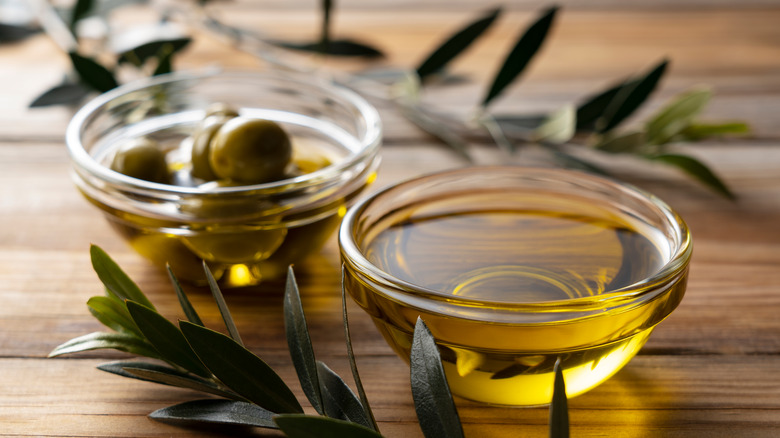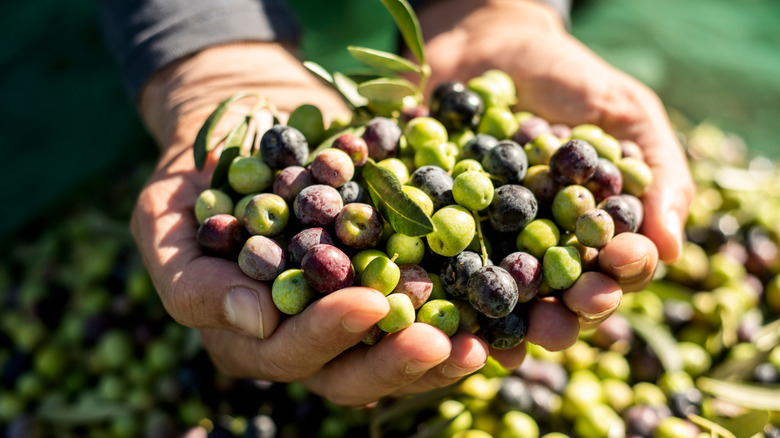Most Of The World's Olive Oil Comes From This Country
After two years of learning how to self-isolate, people have become skilled at making homemade meals again. While we can get most dinners delivered, we've have to learn the recipes of our favorite pasta, salads, breakfasts, and desserts. And it is not surprising that many of our dishes require olive oil. Grown primarily in the countries surrounding the Mediterranean, olive trees and their perfunctory oil is an enormous part of the culture and cuisine in those areas. Incidentally, much of the world now indulges in Mediterranean food, which means that many countries now rely on olive oil too.
Olive oil is made when ground olives are processed through a hammer crusher, so the oil is released from the fruit. Then, the paste must be pressed to successfully extract the juice (via Oliva del Sur). To make 1 liter (1.05 liquid quart) of olive oil, you have to harvest at least 5,200 olives. So, where are all of these olives grown?
Olive royalty
According to News Italian Food, Spain currently conquers production, having made 1.3 million tons of olive oil this last year despite yield slipping. A bulk of the olives in Spain are grown in Andalusia, along the Iberian peninsula (via UNESCO). That specific region has been making olive oil since the Roman age, and some of the olive trees have lived hundreds of years.
Epoch, a Greek agriculturalist, outlines the differences between Spanish olive oil and other countries' productions. For example, Spanish olive oil tends to be more gold in color, whereas Italian and Greek oils are noticeably greener. In addition, the Spanish oil has subtle notes of fruit and nuts, while the other Mediterranean producers are more herbaceous in nature. But most of the time, these oils are mixed and sold together. So don't trust your labels; just because they say your olive oil was made in Italy doesn't mean it's true. According to Epoch, Italy often imports the oils from its neighbors and then blends and bottles them there. So odds are, what you actually have in your pantry, is mostly from Spain.

